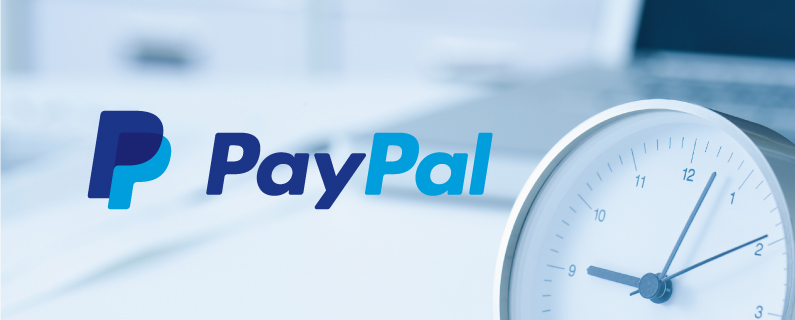
What is PayPal in 2016? A bunch of things. What started as online money transfers is still mostly that. But it’s also about enabling access to that transfer network in a way that’s easy for both buyers and sellers. PayPal has the broadest set of selling tools I’ve found and a brand name Internet users trust. Sell products on your website, send invoices with online payment options, even integrate with more robust shopping cart builders like WooCommerce.
Here’s your 5 minute guide to taking credit cards online with PayPal. But first:
You Probably Don’t Need PayPal
PayPal is a payment processor at heart. They securely process transaction information on your behalf, transferring the money into your PayPal account so you can withdraw it and deposit it in your bank whenever you want.
But you might already have a payment processor for running credit cards, especially if you’re an established business. In this case, I don’t want to complicate your system. Before you explore PayPal and other tools, ask your current processor if they have online tools to meet your needs. You may be surprised at the options they don’t advertise.
If you have a processing service already, that doesn’t mean you can’t add PayPal services into your flow. It’s easy to sign up and get started once you know what you want to sell.
Sell One Simple Thing
What you need:
- Your own website with the ability to edit and add new pages
- PayPal account
One of PayPal’s earliest products was the Buy Now Button. It’s basically an image file linked to a special payment page on PayPal.com. If you have a simple product (like a jar of homemade preserves or a neat painting), then it’s pretty simple to generate a button in your PayPal account. You’ll get a special embed code to copy and paste into your webpage.
When the button is clicked, the customer is taken to a special page on PayPal.com with your item’s price displayed and a checkout form. When the form is filled out, their card is charged and money goes into your PayPal account. You also get an email notification about this transaction. Then it’s up to you to fulfill the order by packing your item and shipping it off.
Sell One Complicated Thing
What you need:
- Everything you need to sell one thing (above)
- A form builder tool like Gravity Forms or Formstack
Optional:
- SSL encryption certificate
- PayPal Payments Pro
What if you’re selling something a little more complicated? Something like a t-shirt available in several colors and sizes? PayPal’s button generator can add options to your button, no sweat. But I think the experience at that point gets junky. Plus, PayPal buttons don’t support upcharges or price changes based on option selections. When your product is variable, you need to move beyond a button and get a real order form.
An online order form allows for submission of more complex order information and options that affect the total price. When you use a form builder, you’re in charge of creating the order screen. Using PayPal Payments Standard, customers will still go to PayPal’s secure payment page to finish checking out.
Want to put PayPal behind the scenes and keep customers on your site all the way through checkout? You’ll need to step up both your PayPal account (from Standard to Pro) and secure data transmission to and from your site with an SSL certificate. This means the customer stays on your site the whole time and never sees anything PayPal related. Makes you look more professional, but requires a professional level commitment to paying for website encryption and maybe even a programmer to assist in the implementation.
Order forms are a great base for selling a variable product. You can string a few forms together and sell multiples. But increased quantity brings increased complexity.
Sell a Few Things (or a Whole Bunch)
When you’ve got more than one thing, you can easily make a Buy Now Button for each. Set up a page on your site with a picture of each product, put the corresponding button below each and you’re up and running. You can set up page after page of Buy Now buttons. But that would suck.
When you have more than four or five things to sell, it’s time to get a shopping cart. That’s a big step up for most websites. It means using custom software you can’t get for free anywhere.
For WordPress website owners, you’re probably looking at WooCommerce (free by itself) and its premium extension store. Budget $80-$200 at the minimum for WooCommerce, a shipping extension and other extras. Use nearly any credit card processor out there, including PayPal, to take payments.
Not running WordPress? Using WordPress but looking for WooCommerce alternatives? Time to trade options and customization for convenience. Check out the all-in-one solutions from Squarespace, Shopify and Square. You’ve still got your work cut out for you, but they’ll do more of the heavy lifting. Squarespace makes you use Stripe for payments and Square is an integrated system combing POS, online, invoices and more. Shopify defaults to PayPal Payments Standard with options to choose other processors.
Hopefully, you’ve found an approach that fits what you’re trying to sell. The amount of time, effort and expertise required goes up with the number of products and number of options. Don’t be afraid to strike out on your own. Make your own Buy Buttons. Build a whole shopping cart with Square or Shopify. I’ve found most tools are simple to start with and most power transactions with PayPal.
Find yourself in a tough spot with selling online? Call Roundpeg. We’ll help you think big about strategic communication and making the most of your online presence. And when it comes to the specifics, we’ve got web experts in-house and a wide network of superfriends to help out.
